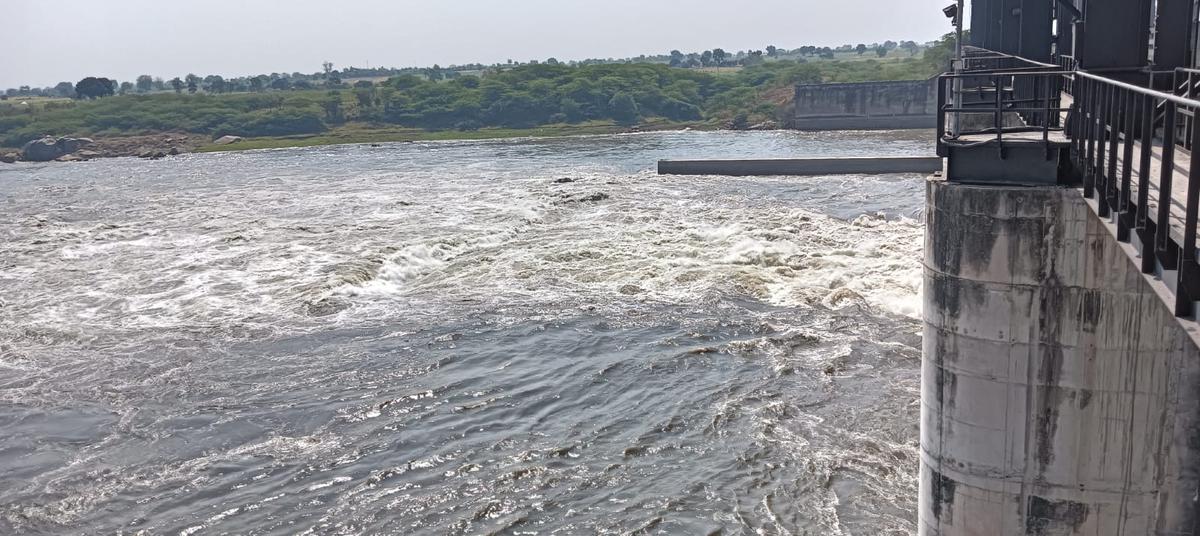
Water flowing downstream of Babli Barrage in Maharashtra on March 1, 2024.
| Photo Credit: K.V. Ramana
hyderabad
The water resources authorities of Maharashtra commenced release of 0.6 tmc ft water from Babli Barrage across the river Godavari near Dharmabad in Nanded district to Telangana in tune with the February 2013 Supreme Court judgement given while clearing the project.
Executive Engineer C.R. Bansod and Deputy EE Prashant Kadam of the Nanded irrigation division of Maharashtra supervised the lifting of the barrage gates to discharge water downstream towards Telangana in the presence of Central Water Commission (CWC) engineers from Hyderabad – EE of Upper Godavari Division E. Venkateshwarlu and Assistant EE Sai Praneeth – as also engineers of Telangana – Deputy EE of Sriramsagar Project M. Ganesh and Assistant EE K. Ravi.

Maharashtra authorities release 0.6 tmc ft water from Babli Barrage towards Telangana on March 1, 2024 as per Supreme Court verdict.
| Photo Credit:
K.V. Ramana
The barrage is located about 30 km upstream of the Maharashtra-Telangana border, where the Godavari river enters Telangana. While clearing the barrage, the Supreme Court had directed Maharashtra to keep the barrage gates open to let water flow downstream freely without any obstruction from July 1 to October 28 every year and to release 0.6 tmc ft on March 1 every year (non-flood season) to meet drinking needs in the downstream areas.
Gates of barrage would be closed once the specified volume of water is released downstream. It was on a petition filed by the then combined Andhra Pradesh against Babli project, the Supreme Court had delivered the verdict with directions to Maharashtra as part of protecting the riparian rights of the downstream areas.





